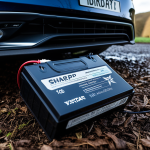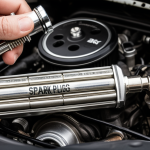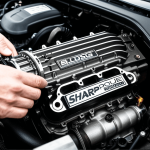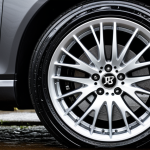Safety Preparations Before Installing Aftermarket Performance Exhaust Systems
Before beginning an installation safety prep, gathering the appropriate safety equipment is essential. This typically includes gloves to protect your hands from sharp edges, safety glasses to shield your eyes from debris, and protective clothing. Adequate tools such as jack stands, wrenches, and penetrating oil should also be on hand to ensure smooth progress without unexpected hazards.
Preparing the workspace plays a vital role in performance exhaust system safety. The area should be clean, well-lit, and ventilated. Removal of clutter and ensuring stable, level surfaces help prevent slips or falls. Positioning your vehicle securely on jack stands is a fundamental safety step to avoid accidents during installation.
Lire également : Ultimate Guide to Maintaining Heated Seats: Enhancing Comfort and Ensuring Safe Driving
Reviewing the manufacturer’s instructions and safety warnings is often overlooked but critical. These guidelines provide information on specific tool requirements, torque settings, and cautions against potential risks unique to each aftermarket exhaust system. Following these instructions precisely enhances safety and ensures the system functions correctly. Taking time for this review reduces errors and supports a smoother, safer installation process overall.
Step-by-Step Safe Installation Guidelines
After completing installation safety prep, the next critical phase is following clear exhaust system installation steps to ensure performance exhaust system safety. First, lift and support the vehicle safely using sturdy jack stands positioned on level ground. Never rely solely on a hydraulic jack, as it may fail, causing injury or damage.
A lire également : Maximize Your Vehicle’s Safety: Expert Strategies for Evaluating and Improving Lane Departure Warning System Performance
When disconnecting and removing the stock exhaust, wear your safety equipment to protect against sharp edges and avoid burns from residual heat. Loosen clamps and bolts carefully, applying penetrating oil if parts are rusted or seized. This reduces the risk of stripping fasteners or unexpected breaks.
During the installation of the aftermarket system, align components precisely before tightening. This minimizes stress that could cause leaks or premature wear. Use torque specifications provided in the manufacturer’s instructions to ensure fittings are secure but not overtightened.
It’s essential to work systematically, moving one section at a time, to maintain control and reduce mistakes. Good lighting and a clean workspace further support safe practices. By adhering strictly to these safe installation practices, you’ll protect yourself and extend the life and performance benefits of your new exhaust system.
Common Hazards and How to Avoid Them During Installation
When working on aftermarket performance exhaust systems, several installation hazards demand attention to maintain performance exhaust system safety. One of the most frequent issues is handling hot components. Exhaust parts often retain significant heat even after the engine cools down. To prevent burns, always allow sufficient cooling time before touching or removing sections.
Sharp edges on exhaust pipes and metal brackets pose a risk of cuts and abrasions. Wearing appropriate safety equipment such as gloves and long sleeves reduces this danger effectively. Additionally, slipping or dropping heavy components can cause injury or damage, so using proper support and lifting techniques is essential.
Avoiding accidental damage to vehicle parts, particularly electrical wiring and fuel lines, is critical. These components are often routed near exhaust systems and can be easily disturbed during installation. Carefully inspecting the workspace and protecting wiring harnesses with shielding prevents costly mistakes and hazards.
Maintaining the integrity of fuel lines is vital to avoid leaks or fire risks. Ensure these are undamaged and remain securely fastened during and after installation.
To summarise, mitigating installation hazards involves thoughtful preparation, cautious handling of hot, sharp parts, and protecting surrounding vehicle systems. These steps contribute directly to performance exhaust system safety and a successful installation free of common exhaust system mistakes.
Safety Preparations Before Installing Aftermarket Performance Exhaust Systems
Proper installation safety prep begins with gathering all necessary safety equipment and tools. Essential items include sturdy gloves to prevent cuts from sharp edges, safety glasses to protect eyes from debris, and clothes that cover exposed skin. Additionally, reliable jack stands and wrenches are critical in supporting the vehicle securely and handling components safely throughout the job. Without the right equipment, risks increase exponentially.
Preparing the workspace is equally important for performance exhaust system safety. A clean, well-lit, and ventilated area minimizes accidents. Remove clutter to avoid tripping hazards and position the vehicle on a level surface to ensure stability. Using jack stands rather than just a hydraulic jack offers a safer and more dependable method to support your vehicle.
Finally, meticulously reviewing the manufacturer instructions and safety warnings cannot be overstated. These guidelines outline specific torque values, tool needs, and warnings unique to the exhaust system model. Knowing these details before starting installation prevents common mistakes and boosts confidence in executing each step safely and correctly. Following this comprehensive installation safety prep sets a strong foundation for avoiding hazards and ensuring a durable, reliable performance exhaust system.
Safety Preparations Before Installing Aftermarket Performance Exhaust Systems
Proper installation safety prep begins with gathering the right safety equipment and tools to reduce risks. Essential items include gloves to protect against sharp edges, safety glasses to shield eyes from debris, and durable clothing covering exposed skin. Reliable jack stands are critical for supporting the vehicle securely, while wrenches and penetrating oil help in loosening rusted or tight bolts safely.
Preparing the workspace is equally vital for performance exhaust system safety. A clean, well-lit, and ventilated area reduces hazards significantly. Clear clutter to prevent tripping, and position the vehicle on stable, level ground for safe jack stand placement. This ensures a more controlled installation environment, reducing the chance of slips or falls.
Reviewing manufacturer instructions and safety warnings is a crucial yet often overlooked step in installation safety prep. These documents include specific torque settings, proper tools needed, and warnings unique to the exhaust system model. Following these guidelines precisely helps avoid costly errors and enhances overall performance exhaust system safety during installation.









